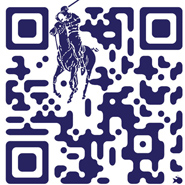January 25, 2013
Luxury marketers are increasing their mobile savvy through touch points such as bar codes and digital watermarks, but are QR codes effective for the luxury sector or should marketers move on?
QR codes can be seen as an innovative tool to eliminate the gap between the physical and digital platforms and make the consumer experience seamless. However, marketers should understand their purpose and the proper ways to use them, experts say.
“I believe that QR codes have the potential to enhance the consumer experience, but are often misused in advertising,” said Melody Adhami, president and chief operating officer of Plastic Mobile Inc., Toronto. “For example, QR codes set on inaccessible billboards or underground in subways with no connectivity.
“I do not think that more advertisers should be utilizing QR codes because there just is not the consumer knowledge at this point to make them effective,” she said.
“There are more innovative mobile channels available to bring the same information to the user.”
The right toolsThere are currently more than 100 million smartphone users in the United States, according to 2012 data from comScore.
This means that luxury marketers should be increasing their presence on mobile media. Marketing campaigns that can connect physical and mobile platforms should be enacted more than not.
This is where QR codes come into play. If used correctly, this tool can be used to engage consumers in a way that a normal ad cannot.
“The addition of a QR code to a pre-existing signage allows brands to take that fleeting moment that a consumer sees an ad and draw that experience out to a longer, rich and more personal interaction,” said Shuli Lowy, marketing director at Ping Mobile, Beverly Hills, CA.
“[A QR code] empowers brands to breathe life into their stagnant ads, particularly when the QR codes are integrated with augmented reality,” she said. “It is campaigns such as these that romance the consumer into a relationship of delight and anticipation with a brand.”
Valued promotions
Any marketing strategy that further engages consumers on mobile platforms could be seen as useful, especially with the number of potential consumers that have access to a mobile device.
Any marketing strategy that further engages consumers on mobile platforms could be seen as useful, especially with the number of potential consumers that have access to a mobile device.
However, luxury marketers need to make sure they are using these tools properly to get the intended effect.
“QR codes should offer a value, since consumers are more likely to interact with the QR code when they feel it is something of value to them,” said Sara Read, vice president of business development at Red Fish Media, Miami, FL. “This could be a part of a giveaway, discount offers or exclusive information.”
QR codes also function differently than other marketing tools, since they require consumers to make the first step in initiating the contact with the campaign and pull out their mobile device.
“QR codes are intrinsically different because they require the consumer to pull out his or her phone, open an application and scan the code,” Ping Mobile’s Ms. Lowy said. “The consumer has to take the primary initiative.”
However, having the consumer take the initiative to scan a QR code could be beneficial to a marketer.
“This reversal of roles creates a deeply engaging brand experience and the illusion that it was the consumer who took the first step to interact with your brand,” Ms. Lowy said.
Effective styleThe strategy when creating a QR code can be the deciding factor on whether the code is seen as useful or not to consumers.
“For example, [marketers should] make sure the code is large enough and visible to the user, make sure it is directed to a mobile-optimized Web site, ensure that it is not positioned somewhere with no connectivity and be sure to keep it as simple as possible,” Plastic Mobile’s Ms. Adhami said.
In addition to making the codes useful, marketers who use them should also design their codes to stand out.
Gucci ad with QR code
“Take QR codes to the next level by utilizing custom QR codes that vary in color, size and theme, and can be designed with the brand’s logo or image of choice,” Red Fish Media’s Ms. Read said. “This will set them apart from others.”
Taking chancesOther luxury marketers have recently made use of QR codes, but improvements could still be made.
For instance, New York department store Bergdorf Goodman flaunted its beauty products through a mail catalog that contains a QR code and digital touch points so that recipients can connect to the retailer on multiple platforms.
The Beauty Handbook 2013 displayed various beauty products and treatments available at Bergdorf. The 13-page catalog also offered affluent consumers a custom QR code on the inside front cover that links to its blog on a pinch-and-zoom Web site (see story).
Also, Swiss watchmaker Hublot bridged the gap between its print and digital marketing efforts by placing a custom QR code on its magazine advertisements.
The ad was placed in January issues of magazines with a large affluent audience. However, magazine readers who scan the QR code are directed to Hublot’s pinch-and-zoom site that is not as easily viewed on smartphones (see story).
Although some QR codes could be adjusted to create a better user experience, those that do not engage consumers are not likely to diminish the brand’s value.
“I do not believe that if a brand utilized a QR code incorrectly that it would diminish the brand’s value,” Ms. Read said. “It would, however, create a bad user experience.”
Final takeErin Shea, editorial assistant on Luxury Daily, New York




No comments:
Post a Comment